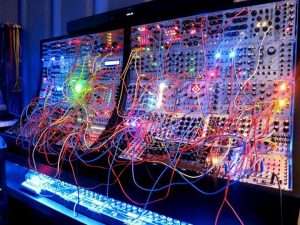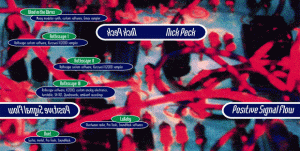I walked into my favorite brick and mortar Eurorack storefront last week: Perfect Circuit Audio in Burbank, California. They are a truly marvelous shop, loaded to the brim with modular gear and electronic music accoutrements. But I was immediately struck by something: it seemed that nearly every module was quite wide, and festooned with loads of blinking lights and colorful displays. It feels like the ever-expanding market of Eurorack modules are getting larger, more complex, and more eye-catching.

I’m not a Luddite by any means, and am all for development and expansion of design. But I can’t help but feel that we are getting away from the basics that make creating modular synth music a unique experience. In my mind, the whole point of carefully selecting fundamental building blocks of synthesis like oscillators, filters, and envelope generators is to create a system that is uniquely your own, reflecting what your particular interest and aesthetic is. There are several benefits to buying smaller, simpler modules to build up your system:
- You really learn the fundamentals of synthesis by exploring each element a function at a time
- It is more affordable to purchase smaller, less expensive modules as you can pay for them, allowing you to relish the slow expansion of your instrument
- You can create an instrument that really reflects what you want to do – which will slowly change over time the more you work with what you have.
To be clear, I love some of the amazing complex modules that are available today. I use Maths, Clouds, and Bitbox constantly, and they fulfill critical functions in my instrument. But the majority of my modules are more fundamental, and taking that approach has really allowed me to build something slowly that I really love and know well.

 I’m in the process of posting my albums and miscellaneous compositions to SoundCloud. They are all available for listening through the
I’m in the process of posting my albums and miscellaneous compositions to SoundCloud. They are all available for listening through the 